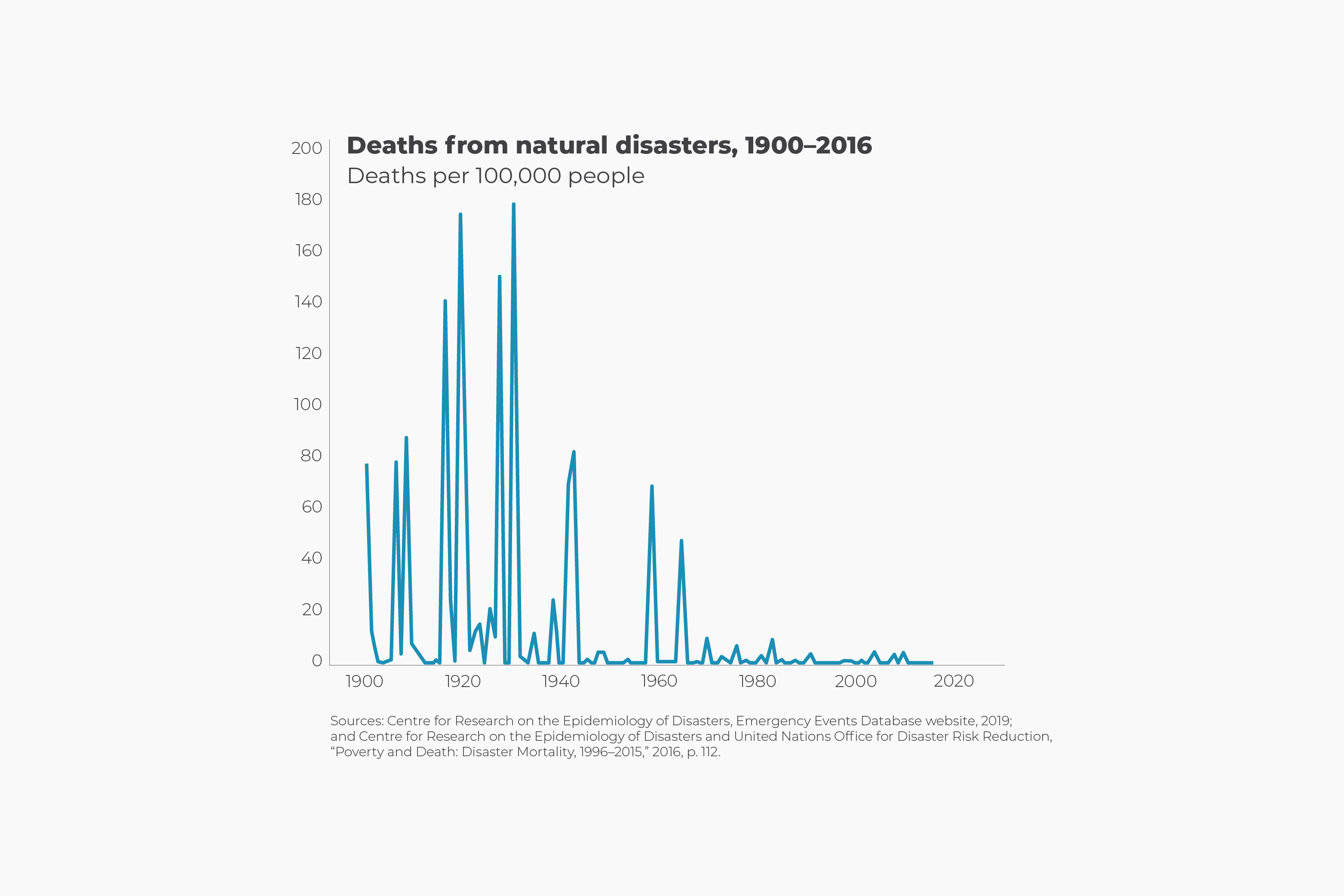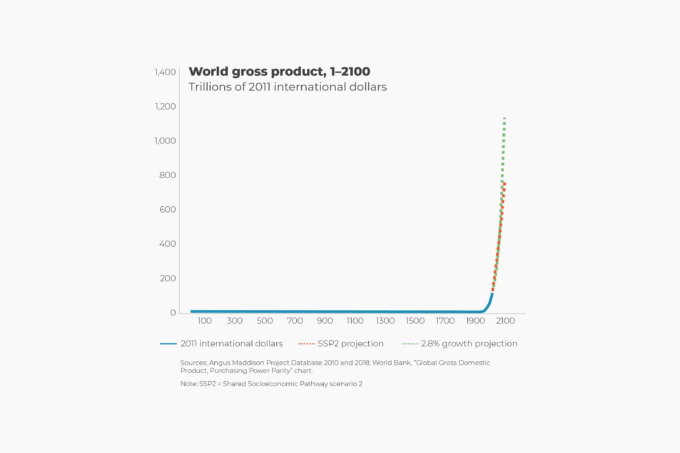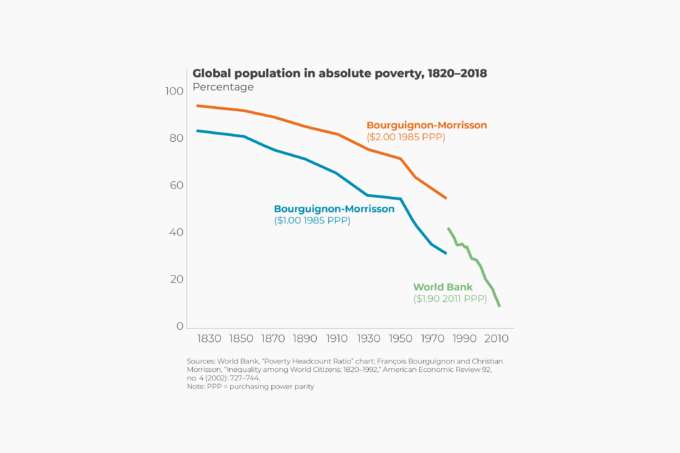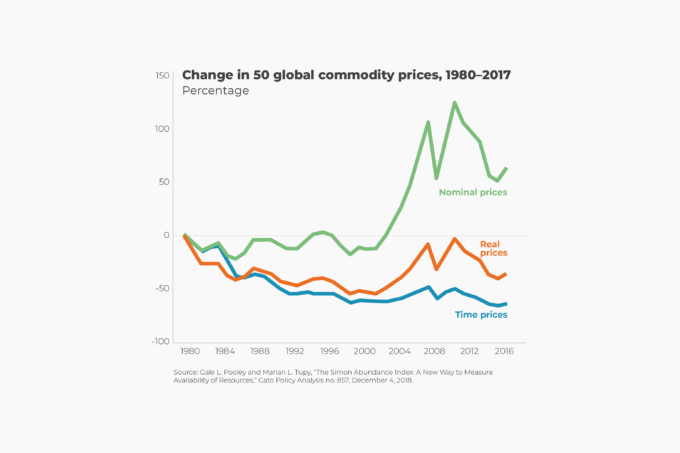The chance of a person dying in a natural catastrophe—earthquake, flood, drought, storm, wildfire, landslide, or epidemic—has declined by nearly 99 percent since the 1920s and 1930s. People today are much more likely to survive natural disasters because of increased wealth and technological progress. Buildings are better constructed to survive earthquakes; weather satellites and sophisticated computer models provide early storm warnings that give people time to prepare and evacuate; and broad disease surveillance enables swift medical interventions to halt developing epidemics.
Unfortunately, bad weather and earthquakes produce death and destruction largely when they encounter poverty. Consequently, 90 percent of deaths from natural disasters occurred in developing and poor countries between 1996 and 2015. The largest natural disasters in the past 20 years were the Indian Ocean tsunami that resulted in the deaths of 230,000 people in 2004, the 2010 Haitian earthquake in which 223,000 people died, and Cyclone Nargis, a Category 4 storm that killed 138,000 people in Myanmar in 2008. In contrast, when Queensland, Australia, was hit by the Category 5 Cyclone Yasi in 2010, the result was zero fatalities.39
The costs of weather-related catastrophes like hurricanes have increased, largely because rising incomes have prompted people to put more property in harm’s way as they build more houses, roads, schools, factories, and shopping centers. Nevertheless, University of Colorado political scientist Roger Pielke Jr. has found that the global trend in weather-related disaster losses between 1990 and 2017 as a proportion of global gross domestic product is downward. Globally speaking, people are generally getting richer faster than nature can destroy their property.








